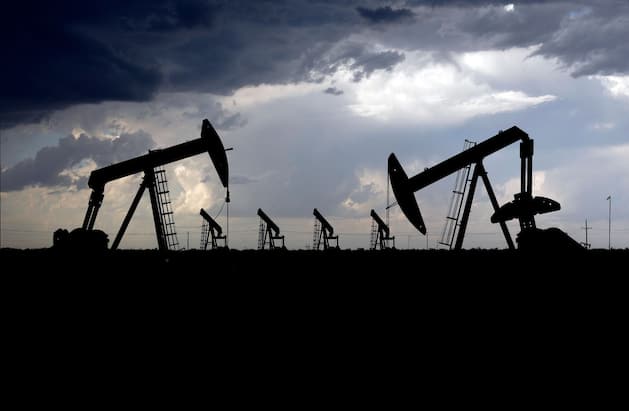In 2022, many energy companies made record profits in the billions. But instead of putting the money to good use, BP, Shell, Total, Exxon and Chevron have been resting on their laurels – at the expense of consumers.
Russia’s attack on Ukraine has sent global energy prices skyrocketing. While consumers and businesses are being asked to pay, the big oil and gas companies are posting record profits. There is also an insidious strategy behind this, which in no way addresses the interests of customers.
Russia’s attack on Ukraine revealed just how dependent the world still is on fossil fuels. Driven by fears of a global shortage, the price for one megawatt hour (MWh) of natural gas in 2022 was 350 euros at one point. At the moment the market has calmed down a bit at 55 euros per MWh – but it is still at a high level, with the price in recent years lying between 15 and 20 euros.
2022 was an excellent year for Chevron, BP, Shell, TotalEnergies and ExxonMobil. According to the data service provider Refinitiv, the “Big Five” generated a combined annual profit of almost 200 billion US dollars. At 91.1 billion US dollars, Exxon and Chevron alone earned more than all the largest American and European oil companies combined in the previous year.
The shareholders should also have a piece of the cake. Chevron has already made a start. The Californians pay out eleven billion US dollars in dividends. Profit was $35.5 billion. ExxonMobil plans to pay its owners $15 billion, the highest dividend in decades.
The fact that the companies posted billions in profits is not only thanks to Kremlin boss Vladimir Putin. “The leading oil and gas companies are also making such high profits because they have reduced investments again in recent years,” says Christof Schürmann, analyst at Cologne’s Flossbach Storch Research Institute, in an interview with Der Spiegel.
A study by the institute has shown that for years, the corporations have been reinvesting significantly less of their sales than their green competitors, for example. In 2021 it was just over six percent of the proceeds – a long-term low. US President Biden has repeatedly urged multinationals to extract more oil. In particular, so that the fuel prices, which have risen significantly as a result of the crisis, fall.
There are several reasons for the reluctance, most notably the collapse in energy prices caused by the pandemic. At the beginning of the lockdowns, the price of oil in the USA even turned negative for a short time. As a result, the energy giants held back with their investments – and despite the explosion in prices caused by the Ukraine war, they did not feel any responsibility.
An exception in the sector is Chevron. Texans have poured $22.7 billion into new oil and gas projects in 2022. That’s a third more than in the previous year. For this, CEO Woods had to take criticism for a long time. The Ukraine war largely silenced these voices.
Another reason is that many companies and financiers no longer want to invest large sums in fossil fuel extraction. After all, the industry is on the decline in view of the climate change – isn’t it?
According to BP chief economist Spencer Dale, security of supply and affordability pushed aside topics such as sustainability and energy transition during the Ukraine war. At the same time, however, the conflict makes it clear: “The world must move away from oil and gas and towards energies that are produced locally in order to minimize energy risks and dependencies.”
That doesn’t seem to have really caught on with some gas and oil giants. A study by the think tank InfluenceMap states that the “Big Five” put just twelve percent of their already meager investments into environmentally friendly projects. For example, ExxonMobil plans to invest $17 billion in green technologies by 2027. Sounds like a lot, but it corresponds to just one percent of the group’s sales in 2022.
According to BP’s current Energy Outlook, the share of oil in energy consumption will decrease from the current 80 percent to 20 to 50 percent by 2050. As early as 2035, global oil demand is expected to fall by up to six percent compared to today. So it’s high time for the “Big Five” to jump on the green train.















